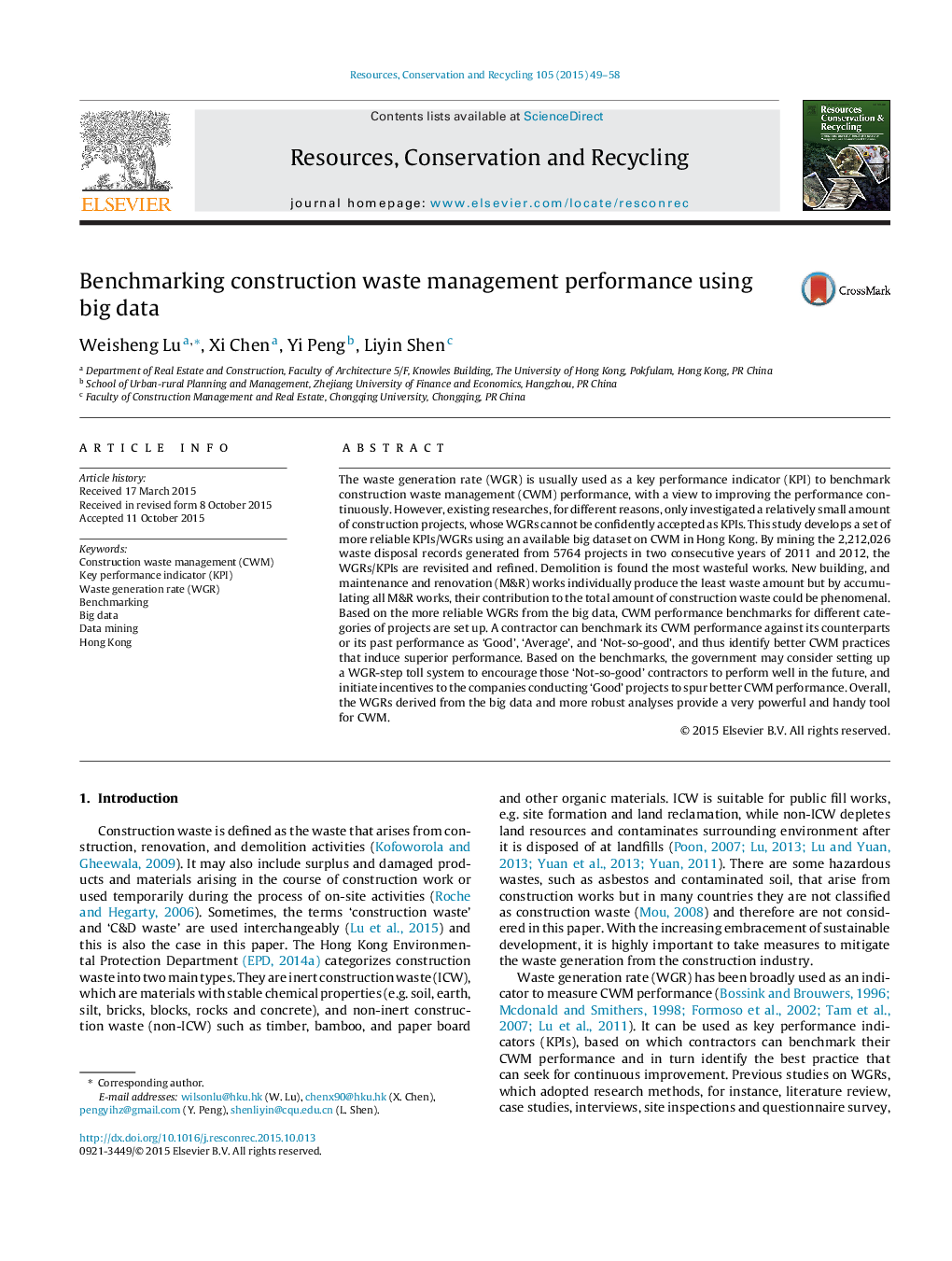| Article ID | Journal | Published Year | Pages | File Type |
|---|---|---|---|---|
| 10508050 | Resources, Conservation and Recycling | 2015 | 10 Pages |
Abstract
The waste generation rate (WGR) is usually used as a key performance indicator (KPI) to benchmark construction waste management (CWM) performance, with a view to improving the performance continuously. However, existing researches, for different reasons, only investigated a relatively small amount of construction projects, whose WGRs cannot be confidently accepted as KPIs. This study develops a set of more reliable KPIs/WGRs using an available big dataset on CWM in Hong Kong. By mining the 2,212,026 waste disposal records generated from 5764 projects in two consecutive years of 2011 and 2012, the WGRs/KPIs are revisited and refined. Demolition is found the most wasteful works. New building, and maintenance and renovation (M&R) works individually produce the least waste amount but by accumulating all M&R works, their contribution to the total amount of construction waste could be phenomenal. Based on the more reliable WGRs from the big data, CWM performance benchmarks for different categories of projects are set up. A contractor can benchmark its CWM performance against its counterparts or its past performance as 'Good', 'Average', and 'Not-so-good', and thus identify better CWM practices that induce superior performance. Based on the benchmarks, the government may consider setting up a WGR-step toll system to encourage those 'Not-so-good' contractors to perform well in the future, and initiate incentives to the companies conducting 'Good' projects to spur better CWM performance. Overall, the WGRs derived from the big data and more robust analyses provide a very powerful and handy tool for CWM.
Related Topics
Physical Sciences and Engineering
Energy
Renewable Energy, Sustainability and the Environment
Authors
Weisheng Lu, Xi Chen, Yi Peng, Liyin Shen,
